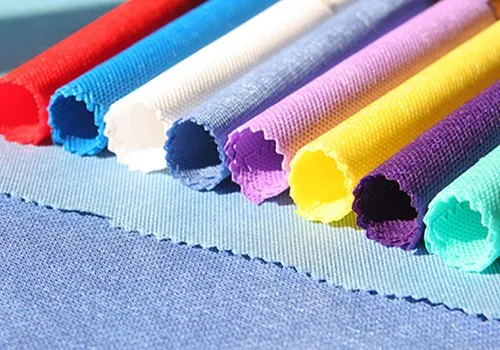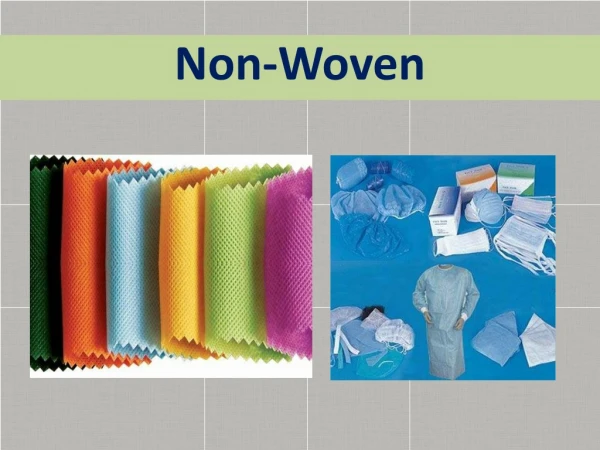Non-woven fabric is a versatile and widely used material that has become essential in various industries, including healthcare, automotive, construction, and consumer goods. Unlike traditional woven fabrics, non-woven fabrics are not made by weaving or knitting fibers together. Instead, they are produced by bonding fibers directly through mechanical, thermal, or chemical processes. This unique manufacturing method allows for a wide variety of non-woven fabrics, each with distinct properties and applications. In this article, we will explore the different types of non-woven fabrics, their production methods, characteristics, and common uses.

1. Spunbond Non-Woven Fabric
Spunbond non-woven fabric is one of the most commonly used types. It is made by extruding molten polymer into continuous filaments, which are then laid on a conveyor belt or drum in a random or patterned arrangement. These filaments are bonded together using heat and pressure or chemical agents to form a strong and durable fabric.
Characteristics:
- High tensile strength
- Good resistance to tearing
- Lightweight
- Breathable
Applications:
- Medical gowns and protective clothing
- Geotextiles
- Shopping bags
- Furniture lining
2. Meltblown Non-Woven Fabric
Meltblown fabric is often used in combination with spunbond to form composite materials such as SMS (Spunbond-Meltblown-Spunbond). In this process, polymer is extruded through fine dies and blown by hot air to form ultrafine fibers that are collected on a conveyor. This results in a very fine and porous structure.
Characteristics:
- Extremely fine fibers
- High filtration efficiency
- Soft texture
- Low strength compared to spunbond
Applications:
- Face masks (especially N95 respirators)
- Air and liquid filters
- Medical dressings
3. SMS (Spunbond-Meltblown-Spunbond) Fabric
SMS fabric is a multi-layer composite that combines the strength of spunbond with the filtration properties of meltblown. It typically consists of two outer layers of spunbond with a middle layer of meltblown.
Characteristics:
- Water-resistant
- High filtration efficiency
- Good strength and durability
Applications:
- Surgical gowns and drapes
- Protective apparel
- Industrial coveralls

4. Thermal Bonded Non-Woven Fabric
Thermal bonded non-wovens are made by using heat to bond fibers together. This method often involves blending thermoplastic fibers with other fibers. The mixture is then heated, causing the thermoplastic fibers to melt slightly and bond the structure together as they cool.
Characteristics:
- Soft and flexible
- Good absorbency
- Moderate strength
Applications:
- Diapers and feminine hygiene products
- Wipes and cleaning cloths
- Incontinence products
5. Chemical Bonded Non-Woven Fabric
In this type, fibers are bonded using chemical agents such as latex or resins. The fibers are first laid into a web, then sprayed or immersed in a chemical binder, and dried to solidify the structure.
Characteristics:
- High absorbency
- Soft texture
- Less durable than thermally or mechanically bonded fabrics
Applications:
- Disposable wipes
- Medical pads
- Linings for garments
6. Needle-Punched Non-Woven Fabric
Needle-punched non-woven fabric is created through a mechanical process where barbed needles are used to entangle the fibers, creating a dense and stable fabric. This method does not involve heat or chemicals, making it suitable for high-loft applications.
Characteristics:
- High loft and thickness
- Strong and durable
- Excellent insulation properties
Applications:
- Carpets and floor coverings
- Insulation materials
- Automotive components
- Filtration media
7. Wet-Laid Non-Woven Fabric
Wet-laid non-woven fabric is produced by suspending fibers in water and then depositing them onto a screen to form a web. This process is similar to papermaking and allows for the use of a wide variety of fibers, including cellulose, synthetic, and even glass fibers.
Characteristics:
- Uniform fiber distribution
- Fine texture
- Can be engineered for specific properties
Applications:
- Tea bags and coffee filters
- Battery separators
- Medical wipes
- Specialized filtration media
8. Hydroentangled (Spunlace) Non-Woven Fabric
Hydroentanglement, also known as spunlace, uses high-pressure water jets to entangle fibers and form a strong, soft fabric. This method does not use chemical binders or heat, preserving the natural feel of the fibers.
Characteristics:
- Soft and strong
- High absorbency
- No chemical residues
- Good drape and hand feel
Applications:
- Baby wipes
- Medical gauze
- Cosmetic pads
- Apparel interlinings
Non-woven fabrics come in a wide range of types, each tailored to specific performance requirements and end-use applications. From the high-strength spunbond used in geotextiles to the ultra-fine meltblown layers in medical masks, each type plays a crucial role in modern manufacturing and daily life. As technology advances, new and improved non-woven materials continue to emerge, offering enhanced properties such as increased sustainability, better breathability, and higher filtration efficiency. Understanding the different types of non-woven fabric allows manufacturers and consumers alike to make informed choices based on their specific needs.


